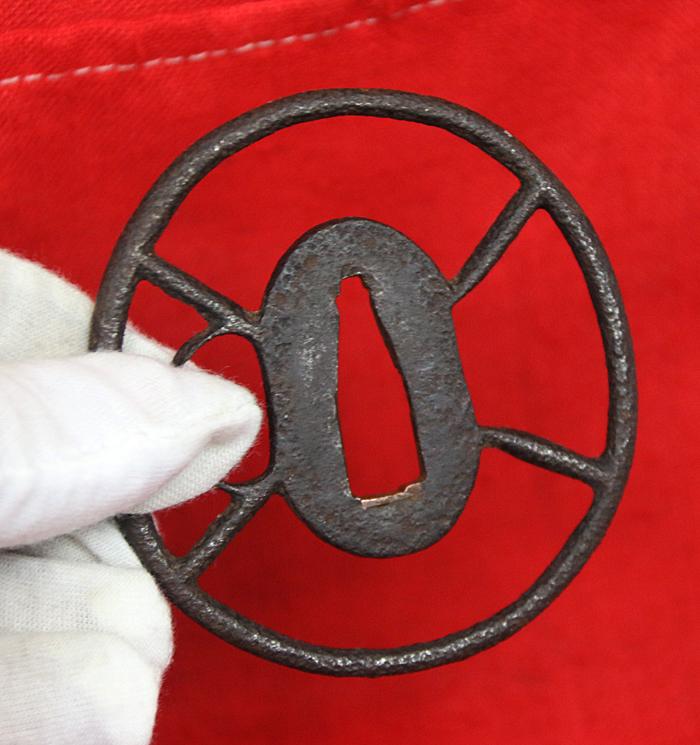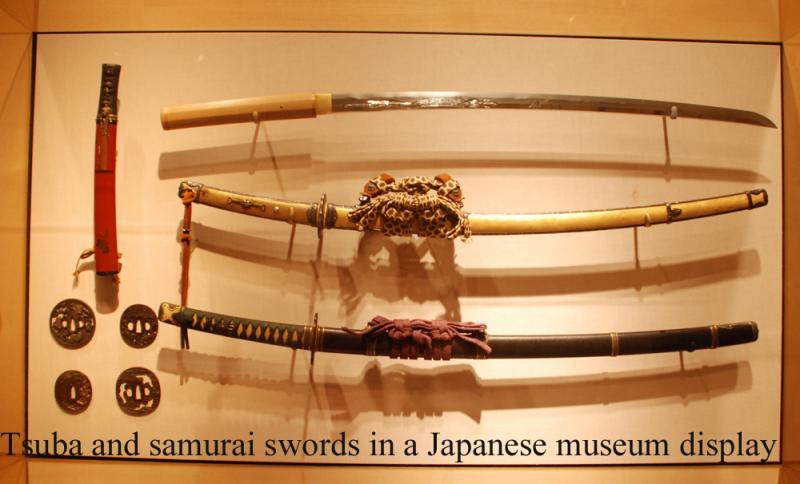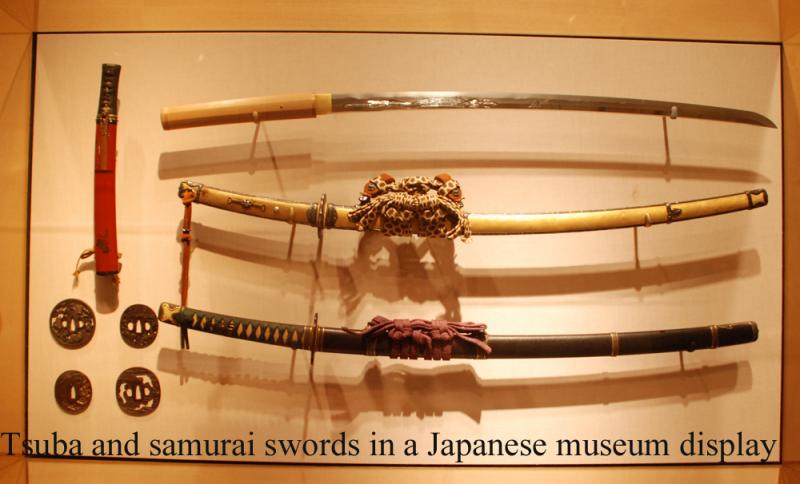A Super Early Samurai Sword Katana Tsuba, Kanayama and Ono School
Kanayama and Ono school tettsu tsuba, Circa 1400
Kanayama Tsuba exhibit a well forged iron with a hammered surface with prominent Tsuchime similar to Owari Tsuba but with stronger Tekkotsu visible in the rim and surface. The origin of Kanayama tsuba is still not a hundred percent clear, but most sources name a city close to Nagoya in the Owari province. In the early Edo period Ono Tsuba developed out of the Kanayama school and continued their tradition with various designs but a bit smaller in size.
The Kanayama school
Beginning in mid Muromachi to the end of Genroku (ca. 1400 to 1710). For purposes of study, the period of production is divided into three sections: the first period is the Muromachi age, second period is Momoyama age, and the third period are the pieces made in Kyoto during the Edo age. Normally round, sometimes oval.
the tsuba's seppa dai is a very good shape, squarish at top and bottom. Usually Thickness 3 to 5.09mm. this tsuba is 5 mm thick . It appears slightly large for the size of the tsuba and slightly more oblong than those found on Owari tsuba.
Many tsuba of the school have thin, raised square peripheral rims (later examples have rounded rims) with 'tekkotsu' visible.
Design Characteristics:
This school would seem to be the earliest to use ji-sukashi (positive silhouette). Most of the designs are plain, direct, and abstract, consisting largely of straight or curved lines that produce a feeling of great dignity. The openwork is so extensive that the remaining metal portions are very fine and slender.
Antique Japanese koshirae [Japanese samurai sword mounts, tsuba and fittings] are considered as fine object d'art in their own right, and have been collectable as individual items or sets, since the Edo period. They were often removed from swords, mounted in small cases, and respectfully admired for display as items of the highest quality workmanship, and symbols of the noble samurai, in their own right. Some koshirae collectors never actually have any interest in the blades themselves, and individual pieces can attain values of tens of thousands of pounds, and there are many multi million pound collections, in and out of museums, comprising of some of the finest examples of Japanese un-mounted sword fittings from the samurai historical period.
70mm across
Code: 24045
675.00 GBP




